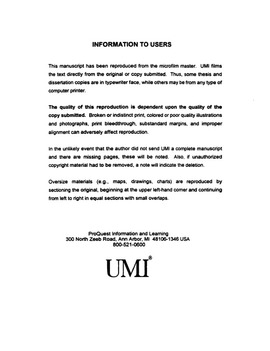| dc.contributor.advisor | Kondonassis, Alexander J., | en_US |
| dc.contributor.author | Hsiao, Chengte. | en_US |
| dc.date.accessioned | 2013-08-16T12:18:50Z | |
| dc.date.available | 2013-08-16T12:18:50Z | |
| dc.date.issued | 2002 | en_US |
| dc.identifier.uri | https://hdl.handle.net/11244/541 | |
| dc.description.abstract | In the past several decades, there has been a resurging interest in the study of the interactions between economic growth, income inequality, and financial development. Since the introduction of Kuznets's (1955) hypothesis, a great deal of literature has been devoted to the investigation of the causal relationship of economic growth and income distribution. Another major strand of thought, often associated with the work of Goldsmith (1969), Mckinnon (1973), and Shaw (1973), stresses the connection between economic growth and financial development. However, the link between financial development and income inequality has rarely been explored by the scholastic world both theoretically and empirically. It is not only unusual but surprising to see that so little attention has been paid to the study of this area considering a large portion of family in developed countries (DCs) and newly industrialized countries (NICs) engage in the activities of financial market on a daily basis. | en_US |
| dc.description.abstract | The purpose of this study is to outline a tentative theoretical model to study the relationship between financial development and income inequality in general and to present an empirical analysis of Taiwan's case to examine what result can be derived from the available data. The choice of Taiwan for our study has several folds. The first is that for the past 30 years, Taiwan, along with its counterparts of Hong Kong, Singapore, and South Korea has been considered as the most successful economic story for the developing countries. Not only does Taiwan sustain high economic growth but also maintains a fairly low degree of income inequality. However, just like most of the developed countries, in the turn of 1980s, Taiwan encountered the reverse trend of income distribution: rising income inequality. The main difference between Taiwan's experience and that of most developed countries is that Taiwan retained a high rate of economic growth while most of the developed countries endured reduced growth even though income equality was suffered for both during the 1980s. It is also the first time in Taiwan's short economic development history, fifty years, the improvement in income equality was no longer in tandem with the economic growth. The second reason is that during that period of time, Taiwan's government initiated a series of financial reform and liberalization measures gradually throughout the decade in order to further facilitate the transactions and deal with the new challenges brought about by the integration of the international financial market. It is of great interest to probe if these two phenomena are correlated as it is alluded indirectly in some economic theories. | en_US |
| dc.format.extent | xi, 108 leaves : | en_US |
| dc.subject | Income distribution Taiwan. | en_US |
| dc.subject | Economics, General. | en_US |
| dc.subject | Financial institutions Taiwan. | en_US |
| dc.title | The effects of financial development on the income inequality, economic growth, and financial system in Taiwan. | en_US |
| dc.type | Thesis | en_US |
| dc.thesis.degree | Ph.D. | en_US |
| dc.thesis.degreeDiscipline | Department of Economics | en_US |
| dc.note | Adviser: Alexander J. Kondonassis. | en_US |
| dc.note | Source: Dissertation Abstracts International, Volume: 63-12, Section: A, page: 4396. | en_US |
| ou.identifier | (UMI)AAI3073699 | en_US |
| ou.group | College of Arts and Sciences::Department of Economics | |
